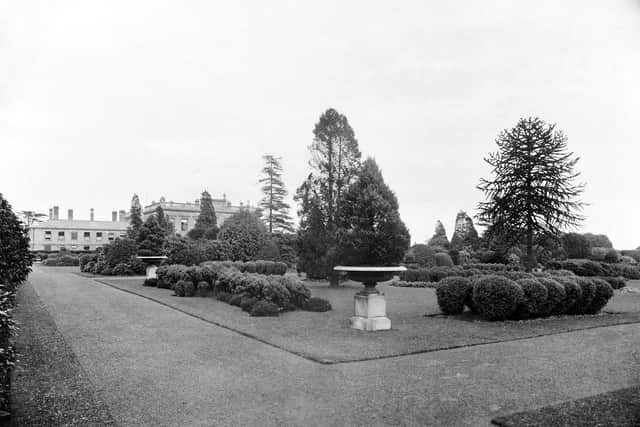Brodsworth Hall: Mastering the art of topiary from cloud shapes to spirals with Yorkshire's gardening 'queen'
Sometimes it’s hand shears, or a battery trimmer. For the most behemoth of creations it can take a petrol cutter to shape perfection, before pruning by hand.
To gardens supervisor Georgina Yates, part of the art is in a mysterious challenge.
Advertisement
Hide AdAdvertisement
Hide Ad“You have to know when to stop,” she said. “Like when you draw a picture, it can be easy to overdo it. And we are painting in a way, it’s just using different tools.”


The gardens at Brodsworth Hall are known for their topiary. The estate, with the grand country hall, has been in the care of English Heritage since 1990 and carefully restored. In the formal and informal gardens, topiary reigns, with endless spirals, pyramids, cloud shapes and more. There is a long history here of creation.
Originally introduced by the Romans, and carried out using sharp knives, topiary was by the 17th century deemed to be high art. In the late 18th century, in the time of Lancelot ‘Capability’ Brown, it was to fall to more cottage gardens, as manor homes favoured his landscape style. But by the Victorian era it was back in full swing, so popular that ‘ready-made’ topiary were created so as to meet a growing demand.
By the late 19th century elaborate bird shapes and peacocks filled many such spaces as a “gardens essential”.
Advertisement
Hide AdAdvertisement
Hide Ad“It died out, in the Second World War,” said Miss Yates. “A lot of the gardeners were sent off to war, and unfortunately a lot didn’t come back. Now, we have got 1,000 pieces of topiary at Brodsworth. All of the team take part in doing it. Our reputation is becoming more known.


“There’s more we can ‘topiarise’ now, with a variety of plants. And this is a garden for all seasons. When you get a light dusting of snow, or frost, it’s just incredible.”
The team here, under head gardener Daniel Hale, are all involved in the process, down to apprentice Sam Mottershead.
Among the shrubs are holly hedge, box, privet or bay. But the topiary is not all-consuming. With a great yew that divides the gardens, it is cut just once a year. For the formal gardens, it’s perhaps a quarterly trim. It can prove difficult to reign it in.
Advertisement
Hide AdAdvertisement
Hide Ad“I know some people, in their own gardens, cut every week,” she said. “It can become an obsession - once a little piece comes out you want to nip it off.”


Last year, after 15 years’ training, the ‘topiary queen’ tried a spiral. Accepted procedure is to bind the shrub with ropes, to define its shape.
“I did it by eye - it turned out brilliant,” she said. “We’ve been doing it so long it becomes second nature. You have to have an eye for it - as daft as it sounds - so you can see the lines that other people can’t. So you can see the picture you can create.”
As tomorrow marks World Topiary Day, gardeners are asked to share their creations using the hashtag #WorldTopiaryDay. Increasingly, it’s becoming popular again for garden design. To Miss Yates, there is a satisfaction to the craft, cutting from fluffy to crisp, clear lines.
Advertisement
Hide AdAdvertisement
Hide AdWhen the lawns are looking nice, and the hedges, it shapes a perfect “picture frame” for the rest of the garden, she said.
Then to the final question: Has she ever ‘clipped too far’, in the hunt for perfection?
“No,” she laughed. “We don’t make mistakes, it’s too drummed into us. I’d like to be let loose on Versailles.”